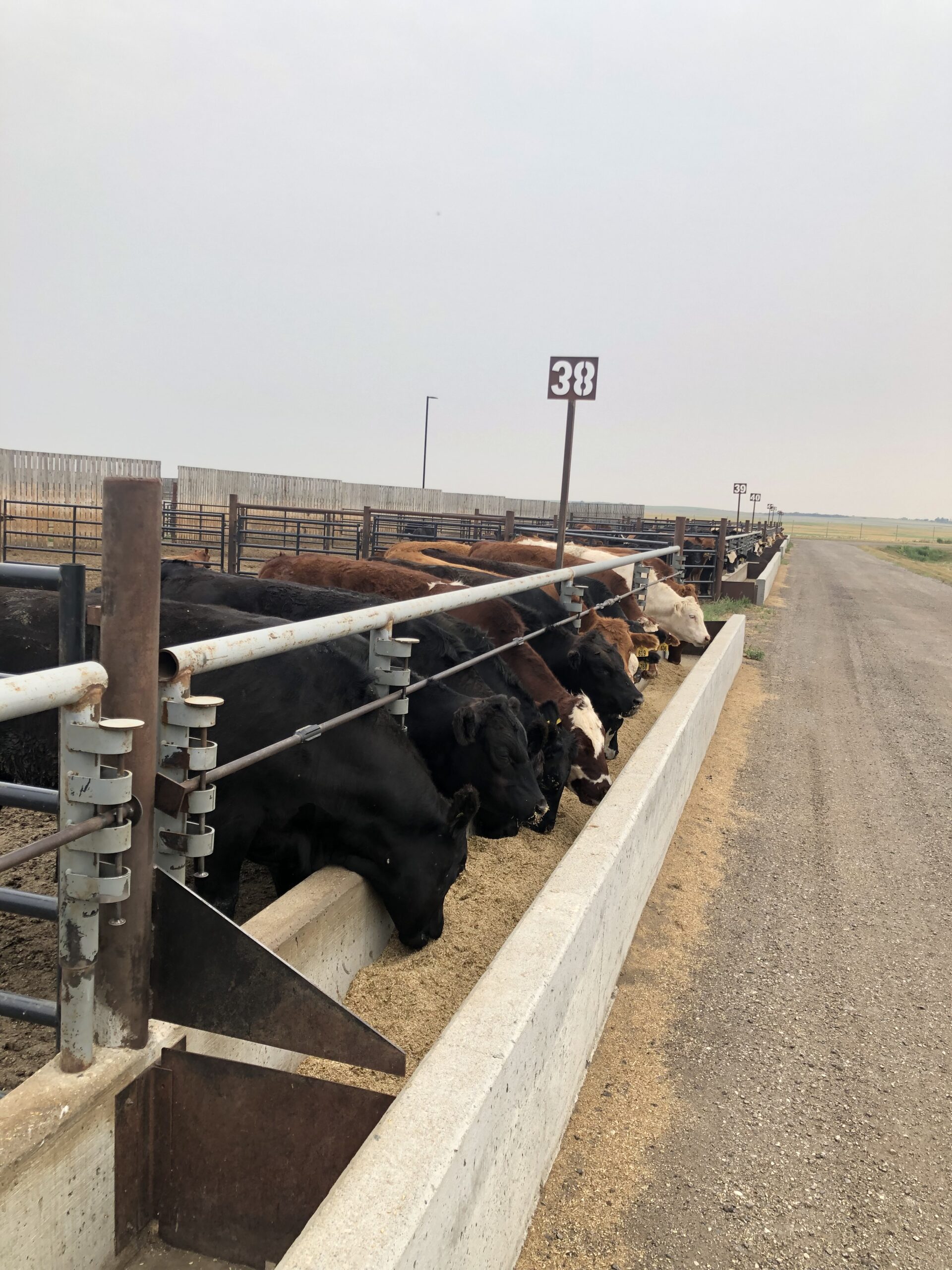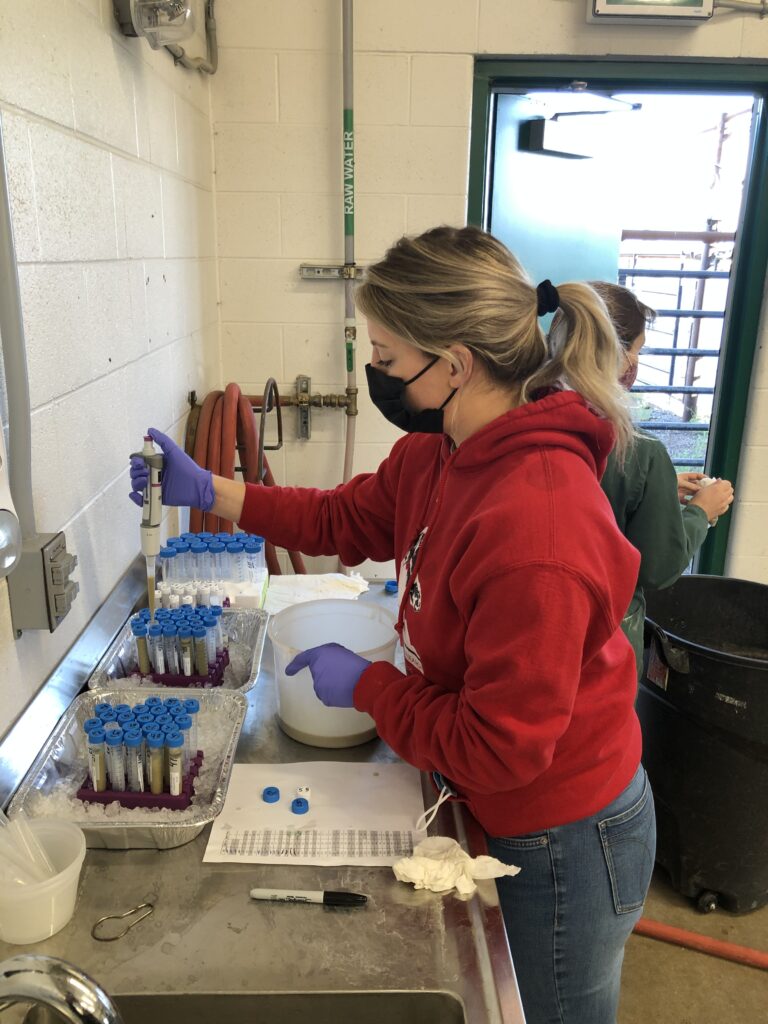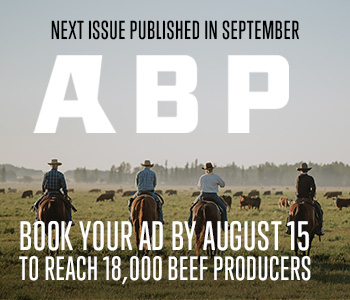AB Direct - Steers
Rail: 495.00-500.00 del
AB Direct - Heifers
Rail: 495.00-500.00 del
US Trade- Steers
Rail: ---
US Trade - Heifers
Rail: ---
Canadian Dollar
0.12

Tapered forage inclusion during finishing supports herd health
This research, lead by Gabriel Ribiero, was conducted at the LFCE at U of S and supported by ABP’s check-off funded research investments.
A tapered forage finishing strategy is a practical approach beef producers can implement this season that may lower both liver abscesses and antibiotic use, without lowering production outcomes.
The beef industry has seen a significant rise in liver abscesses, which currently generate more than $60 million in annual losses in Canada. In the U.S., annual losses are more than $900 million. While in the late 1990s liver abscesses affected about one in five carcasses, that number has risen to one in three.
“Liver abscess is a really big problem, and there is a lot of interest in trying to reduce it,” says Gabriel Ribeiro, Assistant Professor and Saskatchewan Beef Industry Chair at the University of Saskatchewan. “Our research data suggests that including a higher level of forage early in the finishing phase and reducing it gradually may help.”
Study identifies better forage feeding strategy in finishing diet
The research Ribeiro refers to was conducted at the Livestock and Forage Centre of Excellence at the
University of Saskatchewan. The study divided beef cattle into four groups and monitored them for 168
days. Researchers compared two control groups to two test groups. The two control groups were both fed 7.5 per cent forage (barley silage) on a dry matter basis consistently, and one was given tylosin. The two test groups were both fed a tapered amount of forage: one tapering down from 15 to nine and then three per cent; and the other fed in the reverse pattern (starting at three, rising to nine and then 15 per cent). Neither test group was given tylosin.
The goal was to see if feeding the same amount of forage but at varying rates would change the prevalence of liver abscess. “We were looking to see if we could prevent liver abscesses with varying feeding strategies using the same amount of forage through the total finishing phase, but using it differently,” explains Ribeiro.
The research found that feeding a higher percentage of forage in the first part of the finishing phase and
decreasing it gradually produced similar results in terms of performance and liver abscess to feeding 7.5 per cent forage plus tylosin.
The findings suggest producers may attain better herd health outcomes by slowly tapering the forage inclusion during finishing. The key is making diet changes gradually. “By gradually reducing the forage level, producers can be feeding much less by the end so that, overall, they don’t reduce feed efficiency, but still protect against liver abscess,” says Ribeiro.
This alternative offers the added benefit of reducing antibiotic use at a time when the industry is under increasing pressure to do so. While antibiotics have been used to help reduce liver abscess, there are rising concerns about antimicrobial resistance.
“Finding a way to maintain production efficiency while no longer needing antibiotics in feed is very important,” Ribeiro says. “This finishing strategy provides an alternative to the use of antimicrobials.”

Understanding the abscess problem
Researchers are continuing to try to identify the causes of liver abscess, which are associated with the starchy, high-energy grain diet fed during finishing. In fact, increasing forage in the diet has been shown to reduce liver abscesses, but comes at a significant cost to production efficiency.
Theories as to the cause of liver abscesses include rumen acidosis causing lesions from which bacteria escape and travel to the liver through blood circulation, or a more aggressive diet. “We have cattle selected to be more productive so they eat more, and cattle that eat more do have more liver abscesses. But we’re still not really sure why we’ve seen an increase in liver abscesses over time,” says Ribeiro.
Antimicrobial resistance may also play a role. “The antibiotics were better at controlling liver abscess, and
some resistance is showing up now so that might be part of the cause,” Ribeiro says.
In the study, animals adapted gradually to a low forage diet of three per cent were still very healthy, even while being fed highly fermentable grains. “We found that if you are careful with the adaptation process, and you do it slowly and gradually, they can get adapted to very low levels of forage and do quite well,” he says.

He adds, “The biggest learning is that we can prevent liver abscess and maintain feed efficiency by feeding more forage early in the finishing phase, and gradually decreasing them. If we do that, at least in our study, we found we were able to maintain liver abscess rates similar to those we get using antimicrobials, but without using them.”
The good news is this recommended finishing strategy is a practical option producers can implement right away without lowering production values, and without using antibiotics. “This is not something difficult to implement or to consider for some time in the future. This is something that’s applied and practical, and producers can begin doing it right now,” Ribeiro concludes.
This article was first published in Volume 4 Issue 2 of ABP Magazine (June 2024). Watch for more digital content from the magazine on ABP Daily.


